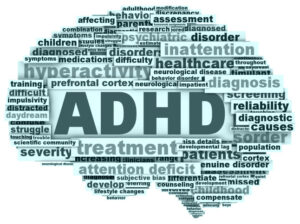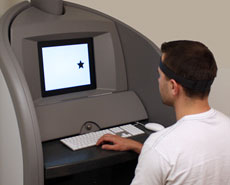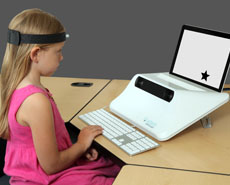
ADHD diagnoses among children has been steadily increasing over the years and more objective measures need to be utilized to confirm ADHD testing results (4). ADHD can be difficult to diagnose for a number of reasons. Firstly, it is primarily diagnosed in children and it can be hard to differentiate between a rambunctious, active child and a child with ADHD. A lot of children squirm when sitting for a long period of time or day dream in a boring subject, but not all these children meet criteria for ADHD.
ADHD testing mainly revolves around clinical interviews and subjective assessments from teachers and parents. Is this method accurate enough to differentiate between the children with ADHD and the children who are just more hyperactive?
What is a Quotient Testing?
A quotient test is a computer-based tool that measures the three main symptoms of ADHD (3):
1.Hyperactivity- cannot control movement while sitting and working
2.Inattention – difficulty staying in focus
3.Impulsivity – inability to self-regulate
Quotient testing, which was cleared by the FDA in 2002, provides objective information in ADHD testing(5).


How does computer testing work?
In this computer task which takes about 20 minutes, subjects are given instructions to press a key when they see certain images and to ignore other images (2). In this form of ADHD testing, the targets are symbolic only and so dyslexia cannot affect testing.
For children, the test is simpler where they are shown the target shape and the the not target shape in intervals. In adolescents and adults, the test can consist of three target and one non target shape present in inter-stimulus intervals (5). Afterwards, their accuracy of responses, and shift in attention states are scored and compared to the results of subjects their age without ADHD (1).
The Quotient system, tracks head movements as well as leg movements throughout the task. People with ADHD tend to fidget more and have trouble controlling their motion compared to people without ADHD (5). The results measure when participants were impulsive (made mistakes) or distracted (not responsive).
Can it be used on its own?
Computer based testing allows clinicians to have an objective assessment to go along with clinical subjective assessments (1). While this is not used on its own, it helps determine if patients meet the definition of ADHD symptoms in the DSM5 which can be hard to directly measure (1). This also adds additional information when a diagnosis report is unclear. Thus, this system helps confirm the results of typical ADHD testing.
Work Cited
1. https://www.quotient-adhd.com/faqs/
2. https://www.additudemag.com/new-adhd-test-quotient-system-for-diagnosis/
3. https://www.nealps.com/add/why-a-20-min-test.php
4. https://www.psychiatryadvisor.com/adhd/a-true-adhd-epidemic-or-an-epidemic-of-overdiagnosis/article/429034/
5. Sumner, C. R. (2010). New tool for objective assessments of ADHD: The quotient™ ADHD system. ADHD Report, The, 18(5), 6-9.
